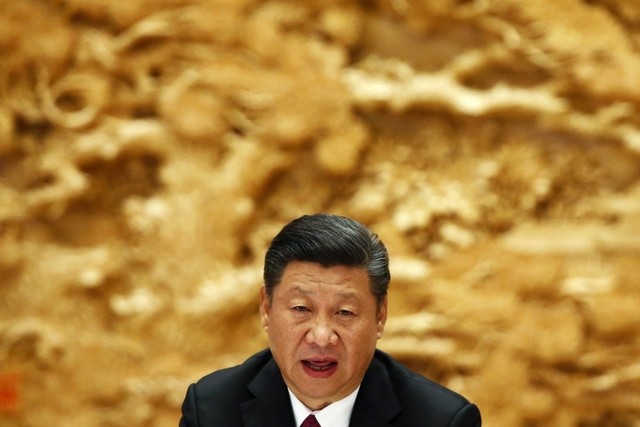As China formally launched the largest infrastructure development programme the world has ever seen, the BBC World Service led its Sunday news bulletins with the following story: a 101-year-old great-grandfather from Somerset had become the oldest man on the planet to do a skydive. When the network, which reaches a global audience upwards of 66 million, finally got to the events under way in Beijing, its description was shot through with doubt. Is this a Trojan horse, the presenter asked, a sneaky trick to lull other countries into letting down their guard?
It is a good illustration of the problems China faces in selling its Belt and Road Initiative to the world. From the outset, the plan has been met, in some quarters, with equal parts suspicion and scepticism.
Questions have been raised about its scope, scale and slew of expensive projects — roads, railway lines, ports, pipelines and much else — that is expected to join China to Central Asia, Europe and Africa by land and sea over the next few years.
India, China’s giant neighbour, has been grumpy about the infusion of renminbi into its rival Pakistan, especially the $57 billion (Dh209 bn) trade corridor through the disputed territory of Pakistan-administered Kashmir. Japan has expressed profound distrust of the plan, at least until China “rectifies its self-serving behaviour”, in the words of the country’s most widely read newspaper Yomiuri Shimbun. The European Union has raised concerns about the initiative’s perceived shortcomings, not least its insufficient transparency and inadequate social and environmental sustainability. And Australia has assumed a mugwump position, plonking itself firmly on the fence, one eye fixed on the main chance. The result has been a comical contortion with Canberra rejecting the invitation to formally sign on even as it expressed eagerness about commercial opportunities.
What’s going on is pretty obvious. India, Japan, most of the European Union, Australia and some other countries are wary of China trying to take charge of a wholly remade new world order. The distrust and derision mostly reflects the world’s collective nervousness at the thought of profound change, especially one led by a people described unkindly as inscrutable.
Long years ago, Lord Tennyson described another such period, a time shrouded in myth, the passing of the legendary King Arthur and of his knightly fellowship and glorious court at Camelot. “The old order changeth yielding place to new,” Tennyson wrote and that line seems to sum up the twists and turns of 21st century geopolitics.
So is the old order really changing? It’s probably fair to say the 20th was indisputably the American century but that there is no certainty this will continue.
President Donald Trump has expressed impatience with the idea of United States support for friends, allies and trading partners.
Right on cue, along comes China with its sandwich board for Globalisation 2.0. Of course, China’s president Xi Jinping originally articulated the idea four years ago but it is symbolically significant the formal roll-out has occurred within four months of an “America First” administration taking office in Washington.
It’s also worth noting that the nearest equivalent to the Belt and Road Initiative is America’s now nearly 70-year-old Marshall Plan, but even that is peanuts in comparison.
After the Second World War ended, the US provided aid to western European countries of just over $13 billion, which would be roughly 10 times as much today. But China has already pledged $1 trillion in investment throughits banks and credit funds.
Undoubtedly, the scale of the plan and the sweep of China’s ambition makes it look and sound unreal, a celluloid fantasy portraying the hand-off between superpowers.
India, for instance, has repeated the criticisms voiced by western economists about the risk of indebting countries for ever. The argument goes that granting loans rather than aid is a more insidious way of controlling another country. That is undoubtedly a worry, but influence can be purchased as much with aid as with a loan.
Of course, there is much still to be determined about globalisation with Chinese characteristics.
At the roll-out, Mr Xi drew a contrast between the American-led world order and the new one envisioned by China. Beijing would not interfere in other countries’ internal affairs, he promised, it will not export its system of society and development model or impose its views on others. Naysayers such as India with past knowledge of imperialism scoffed but every attempt at international connectivity doesn’t have to automatically mean a new colonial era.
In fact, if it does nothing else, the Chinese plan is likely to serve as a stimulus for global trade.
It could do this on its own and/or by serving as a trigger for copycat initiatives. India and Japan, for instance, are currently finalising plans to fund a clutch of infrastructure and capacity-building projects in Iran, Sri Lanka, Myanmar and Africa. The pace of those ventures is quickening, with a crucial meeting planned for next week.
Though chairman Mao is no longer in fashion, his slogan may be apt in this new phase of China-aided globalisation: Let a hundred flowers bloom.


